With the stock market calming down somewhat and the country looking at the next phase of the crisis, I wanted to take some time to walk through what we are seeing in the economy, the stock market, and SEM's investment models. I know many advisors and investors alike have questioned about what comes next. Since this is yet another "unprecedented" situation, the best thing to do is focus on the data and what our models are saying.
For those of you (like me) who would rather read than watch a video, here are the slides with some commentary:
Our economic model was "bearish" before the virus struck the US. It is designed to look for signs of true economic strength. No guessing on our part, just the model that has served us well over the years.
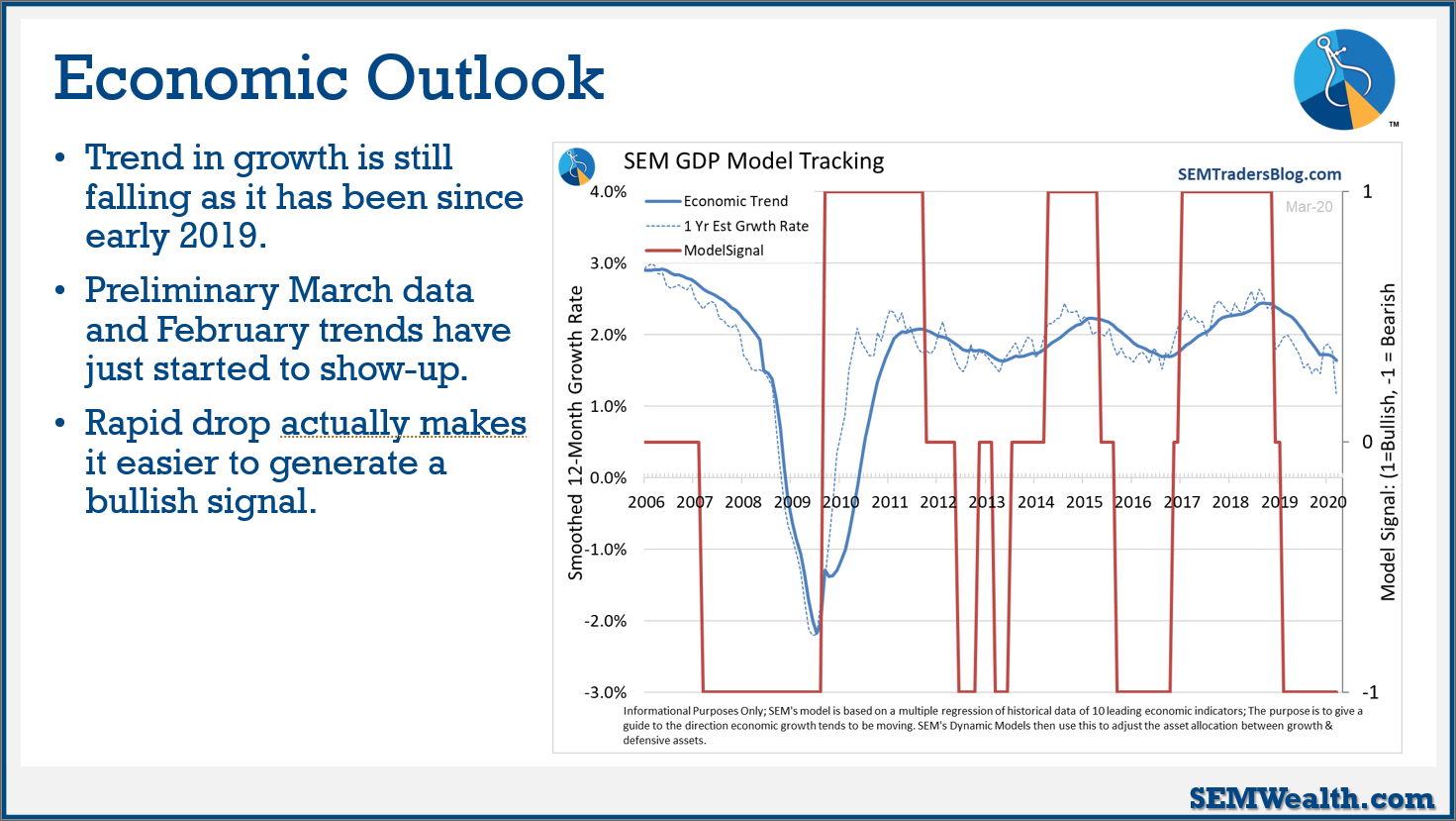
We all experience emotions. That's what makes us human. Many people believe we've hit the "bottom" in the emotional cycle, but based on the data and my experience, we're somewhere in the "denial" phase.
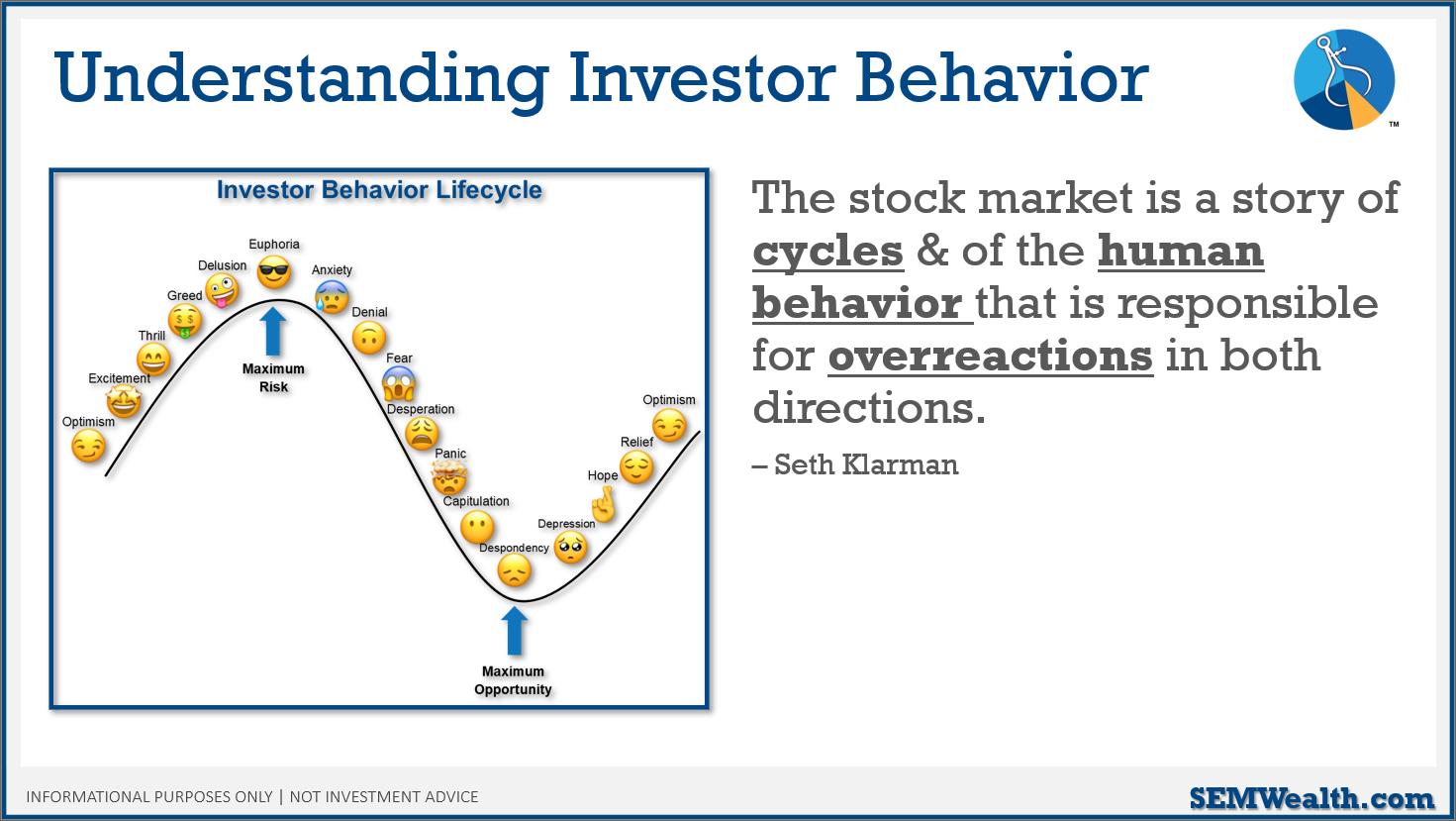
Our brains are programmed to focus on the recent experiences. For the last 12 years "buying the dip" has worked. The recent recovery of 50% of the losses is dangerous because it reinforces a "buy the dip" mentality. Buying the dip works, until it doesn't.
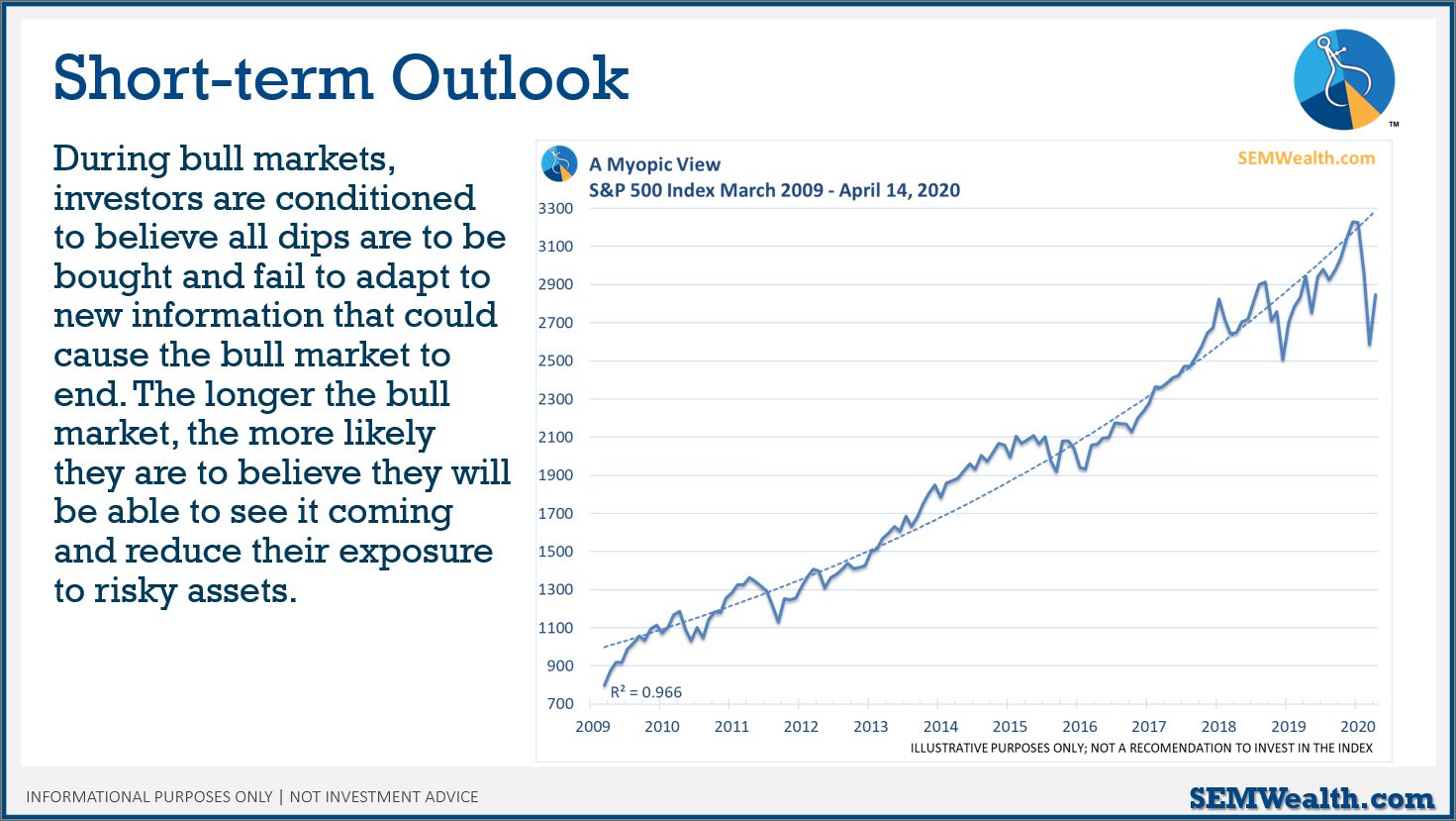
We've gone through the "panic" phase and are now in the midst of a "relief" rally as the number of deaths and infections appears to be flattening. Based on past recessions, the "reality" phase is the scary one that usually brings a move back to or below the prior lows.
One thing is clear. Stocks are certainly not undervalued. Based on a "normal" P/E and a "normal" recession, stocks are 20-30% OVERvalued. It is a huge leap of the imagination to think earnings will revert back to where they were and investors will willingnly pay the same multiple on those earnings (P/E).
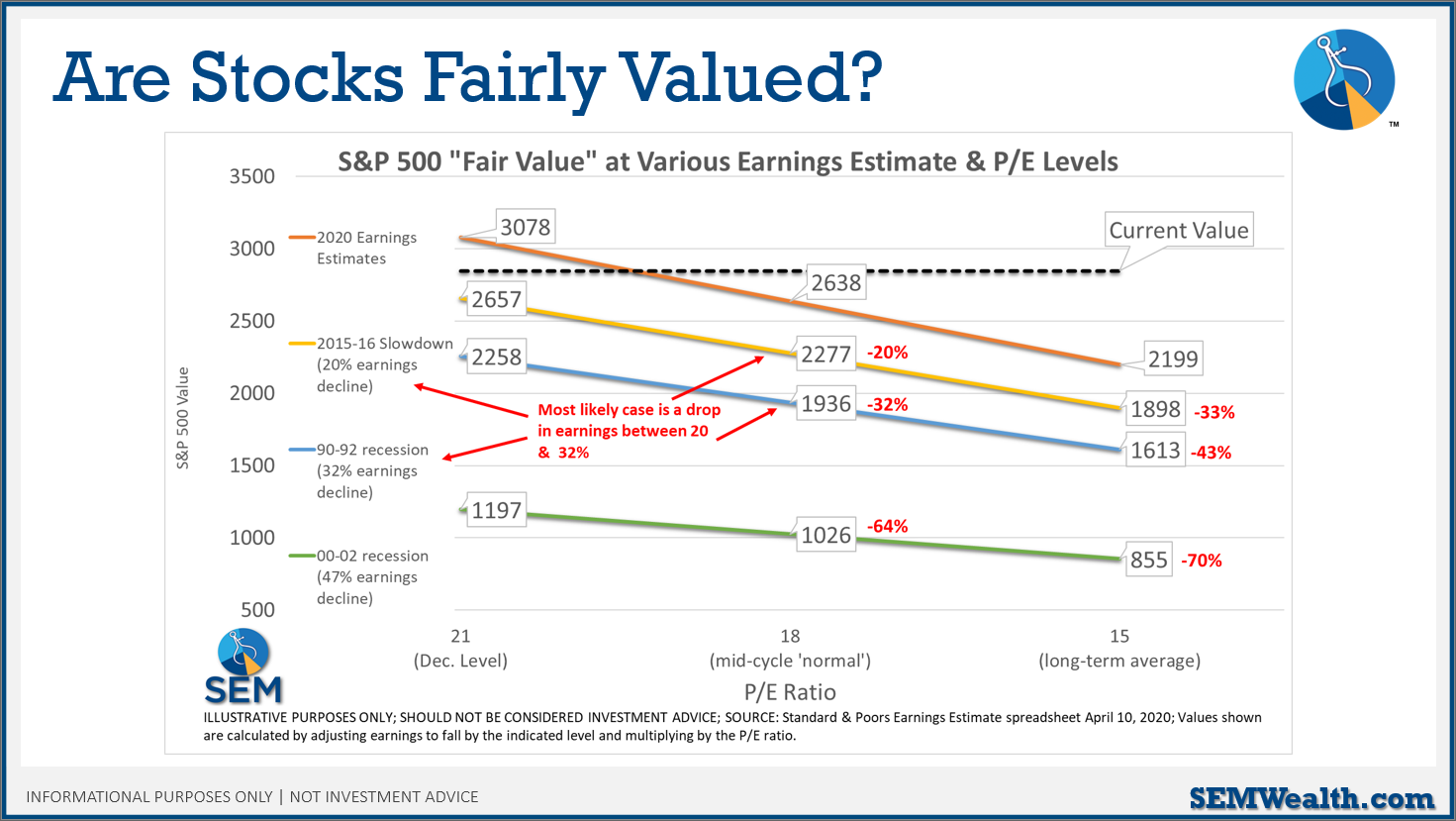
Bear markets are a process. Looking at the worst bear markets we can see the painful up and down moves before the market finally recovered. Being inside of these markets often leads to emotional mistakes.
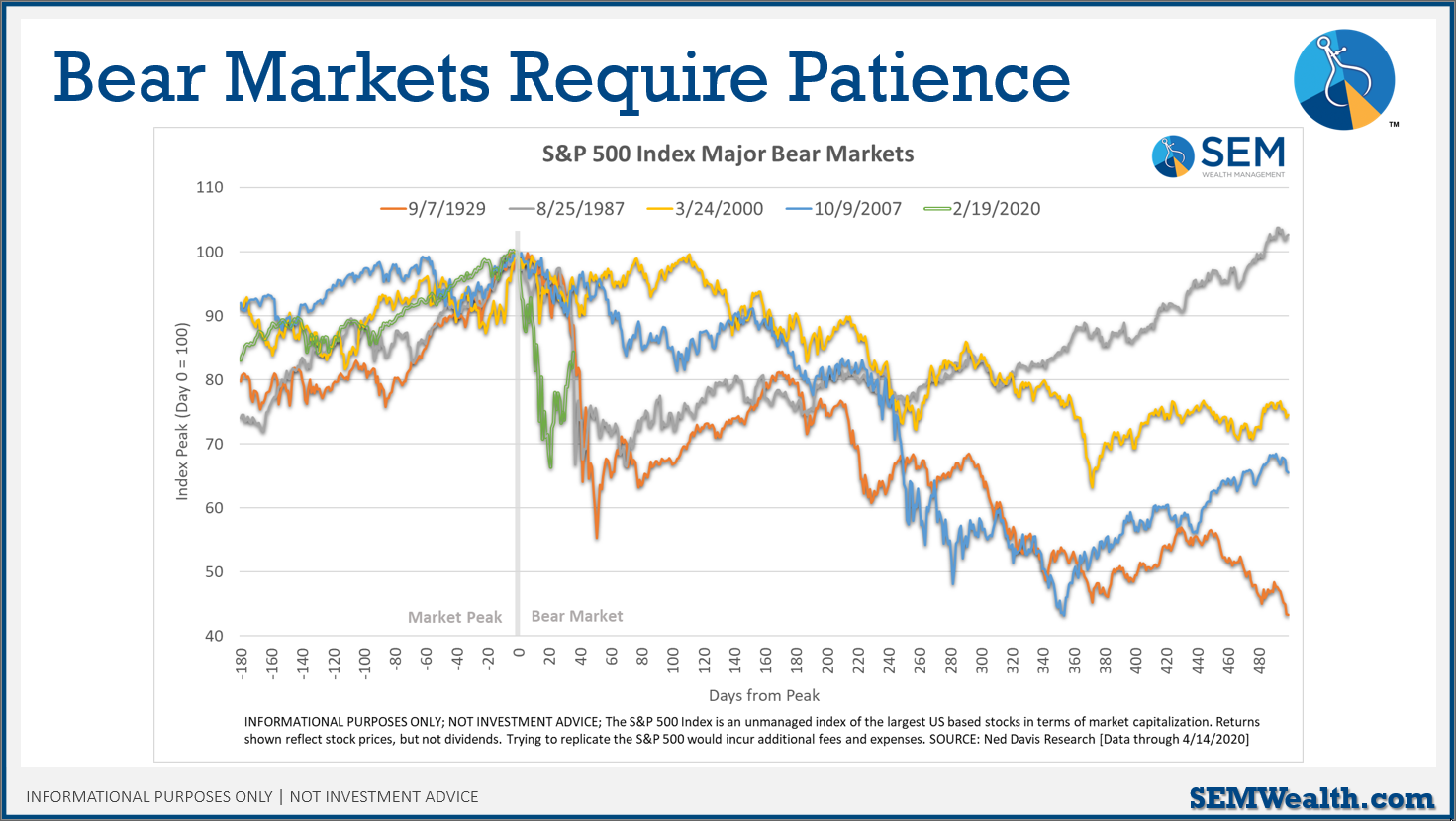
Taking a step back, we can see prolonged bubbles followed by 18-24 month sell-offs that took the market back below the long-term average.
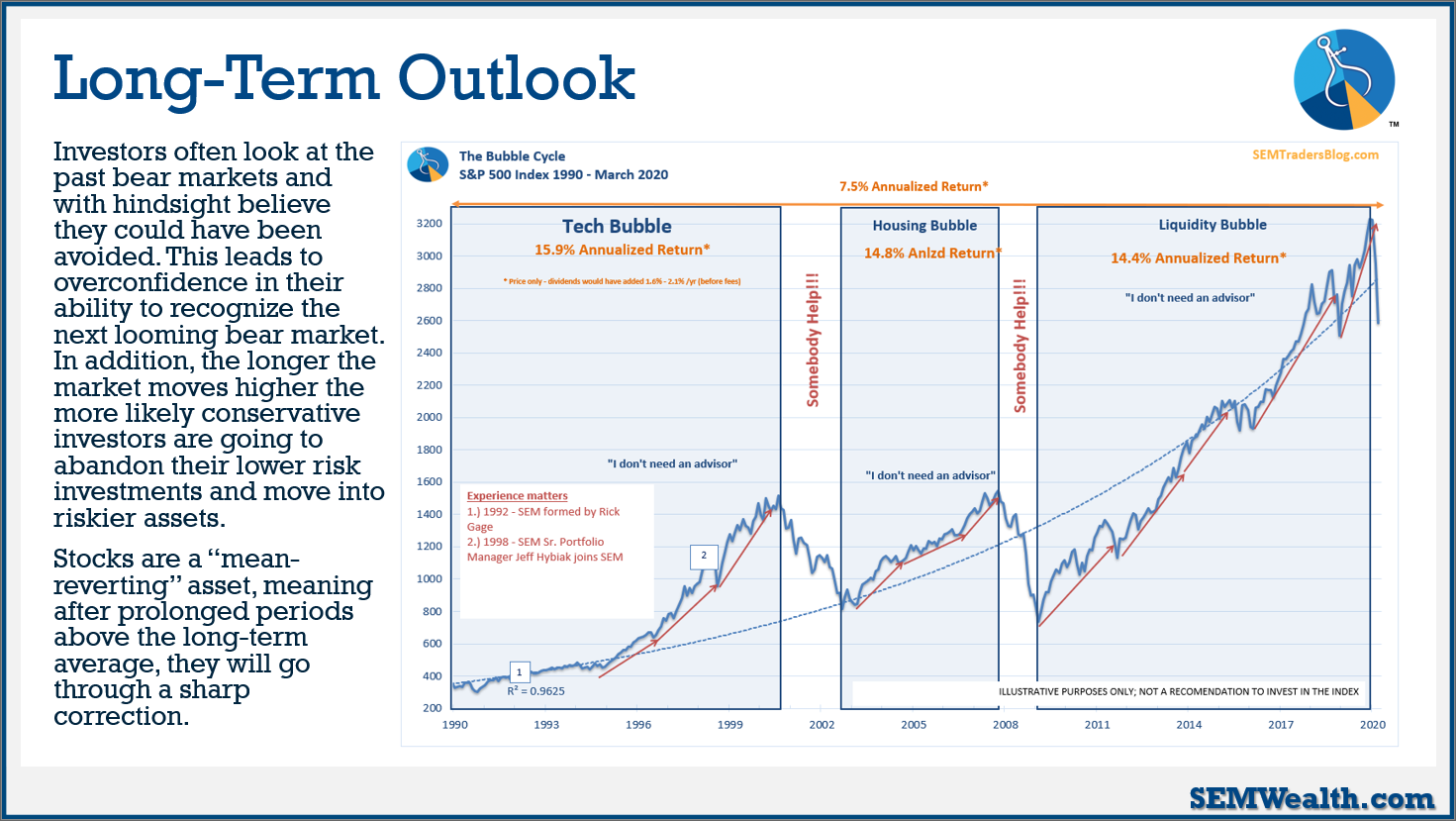
To get strong long-term returns, buy and hold investors need to wait until valuations are below normal. We haven't even returned to normal yet. The best indicator of long-term market prospects is the Buffett Indicator. Even using December 2019 economic data and March 2020 stock prices, this indicator continues to show the returns over the next 10 years are likely to be low.
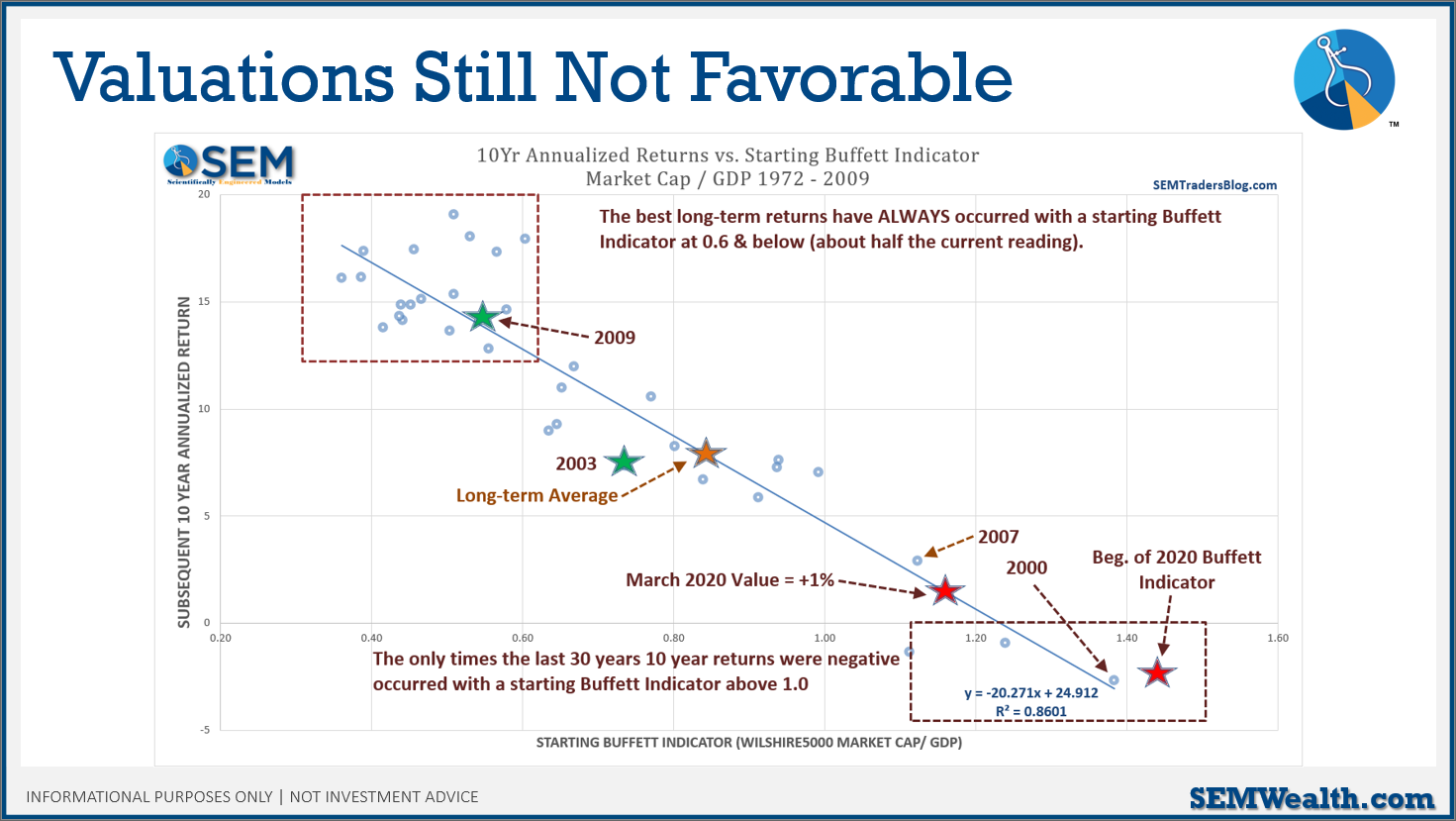
If you're a buy and hold investor, you should be prepared for stock returns to be low. The problem is stocks won't average 2% per year for 10 years, but instead will go through a very painful, sharp sell-off and then attempt to claw its way out of it.
I took a deep dive into the various valuation metrics here.
It is important to understand your investment personality. It actually changes as we get older. Our Risk Questionnaire is a valuable tool to help you determine where you are on the personality spectrum. From there it can help you identify biases you may have and adjustments to be made to your portfolio. Take our short questionnaire here.
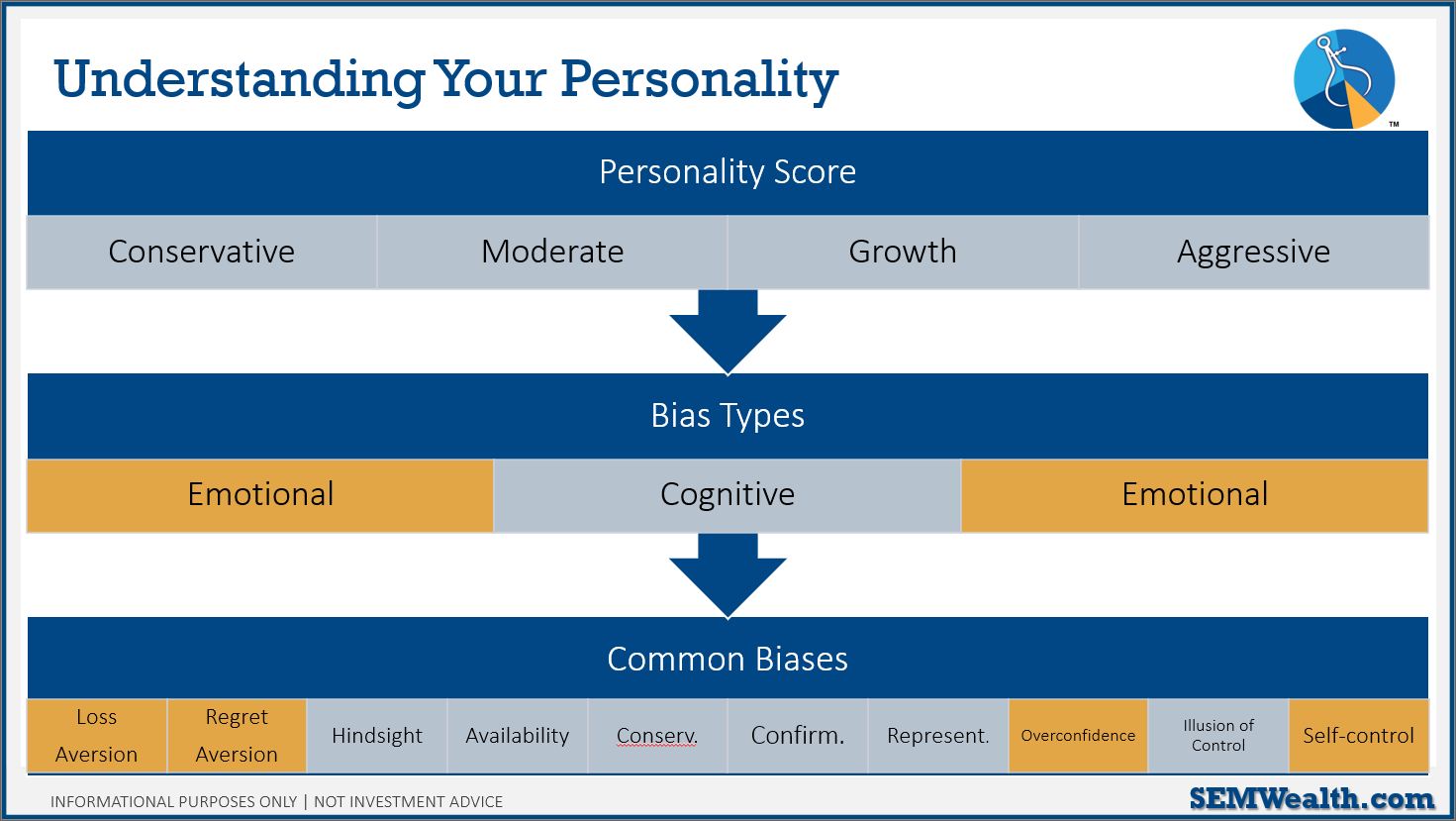
The key to our behavioral approach is starting with a financial plan and then developing a cash flow strategy. Those two components then determine what type of investment returns and risks we should target. Your personality is then factored in when we make the recommendation.
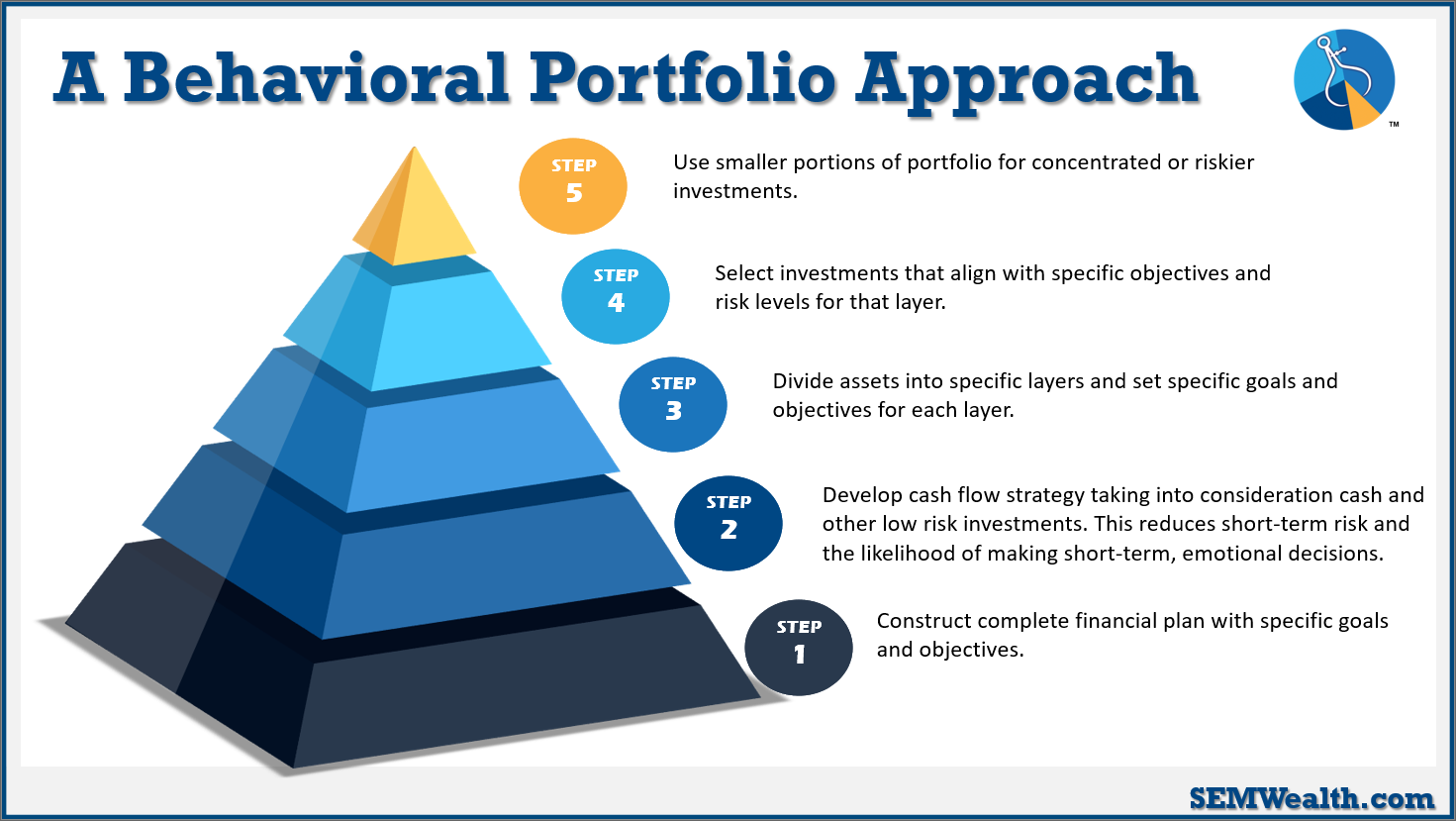
If you don't have an advisor, we can help you get started. We have a free financial assessment at WhatsMyScore.net. There are EZ & Full Financial Assessments as well as one for TSP Participants. From there we can contact you to put you in touch with a financial advisor.
Once we know the financial plan, cash flow strategy, risk tolerance, and investment personality, we have a wide range of diverse investment models to create customized portfolios. With three distinct investment management styles as well as the inclusion of outside managers in our Dynamic portfolios you get a truly diversified allocation inside of SEM.
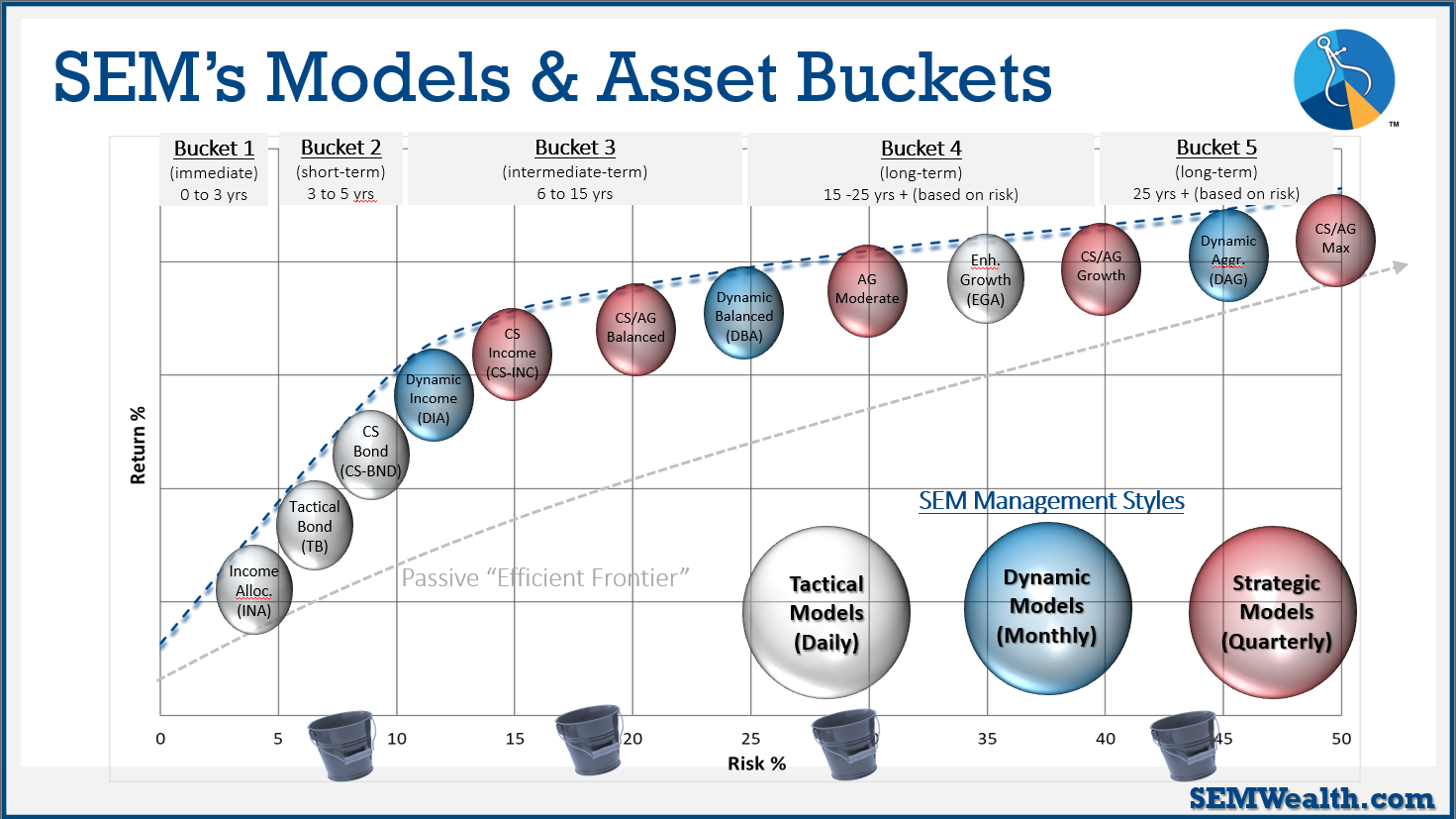
What makes SEM unique is each customized portfolio will then have a stock exposure range. Throughout the market cycle you'll see the allocations scale up and down within that range based on the individual trading systems inside each model. It is highly sophisticated, but also simple when you look at it from a big picture perspective. Based on valuation metrics, we aren't yet down to the most attractive areas to enter the markets, which means you still have time to move your money from a static buy & hold approach to our sophisticated, customized models.
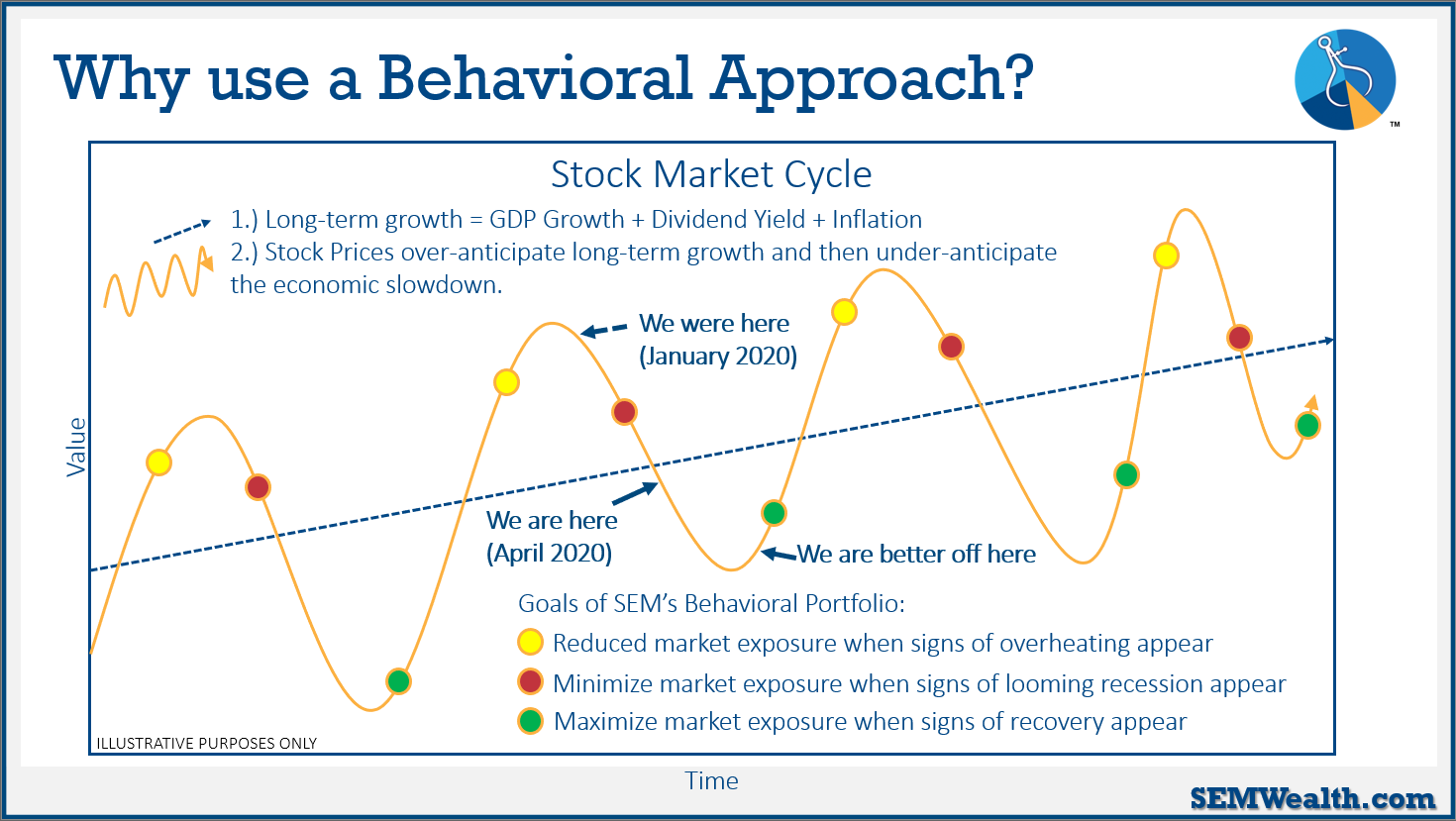
We've seen some stabilization in the markets, mostly thanks to the Federal Reserve. This has led to some nibbling in our "tactical" bond systems. Here is a summary of where we sit today.
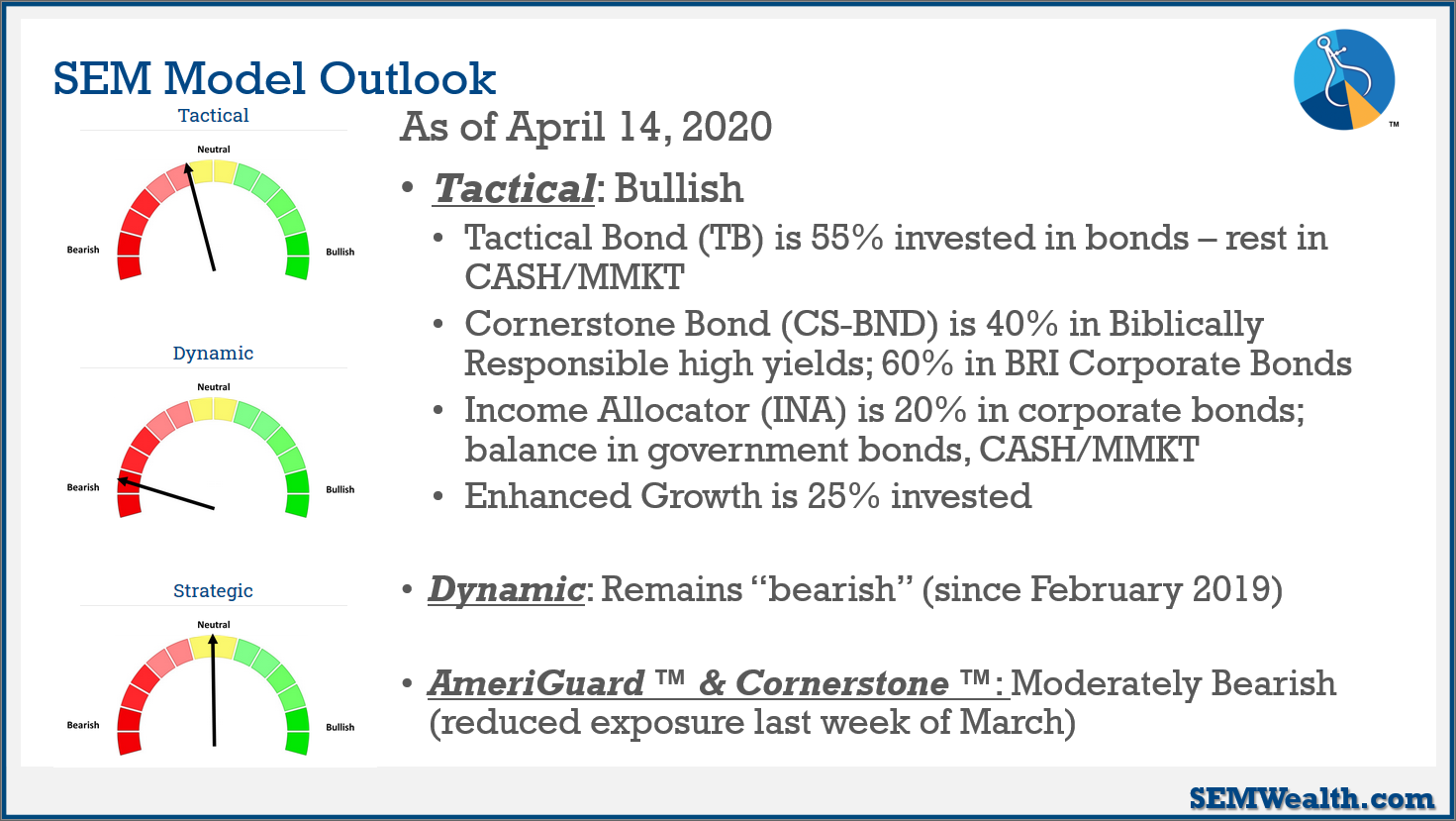
The most important thing to understand is we don't have to be right. Those in a buy and hold strategy MUST be right that the economy and earnings will quickly return to the January levels. If we see that happening, great! We have a plan for that. However, if the more likely "reality" sell-off occurs we also have a plan.
The critical thing to understand is we don't have to be right. We'll follow the data and adjust accordingly. We discussed this in greater detail in "We have a plan."
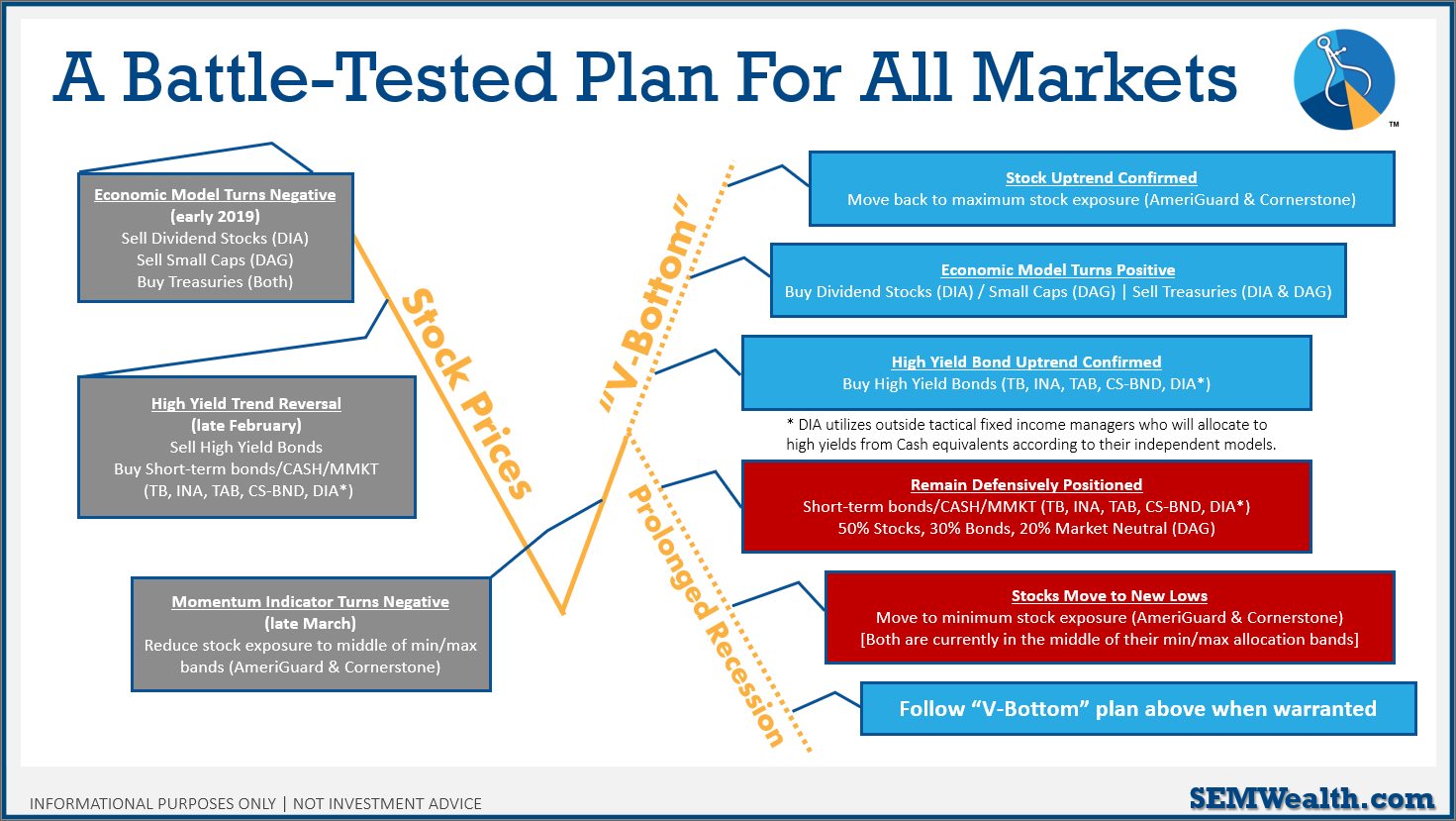
The key thing to remember is whether you are an investor or an advisor is you don't have to guess. You don't have to be "right" to have success. Whether this is ultimately the bottom or not, we will have more panic sell-offs in the future. That's just how markets work.
We'd love to be able to help you out. SEM was built to handle "unprecedented" events so our clients and advisors can focus on what's important to them in their lives.




